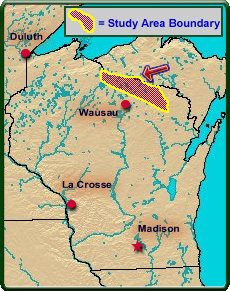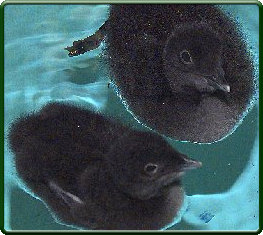Upper Midwest Environmental Sciences Center
Factors Affecting Common Loon (Gavia immer) Productivity
Publications and reports that describe our findings are listed below: Fournier, F., W. H. Karasov, K. P. Kenow, M. W. Meyer, and R. K. Hines. 2002. The oral bioavailability and toxicokinetics of methylmercury in common loon (Gavia immer) chicks. Comparative Biochemistry and Physiology A 133:703-714. Kenow, K. P., S. Gutreuter, R. K. Hines, M. W. Meyer, F. Fournier, and W. H. Karasov. 2003. Effects of methyl mercury exposure on the growth of juvenile common loons. Ecotoxicology 12: 171-181. Karasov, W. H., K. P. Kenow, M. W. Meyer, and F. Fournier. 2007. Bioenergetic and pharmacokinetic model for exposure of common loon chicks to methylmercury. Environmental Toxicology and Chemistry 26:677–685. Kenow K.P, Meyer M.W., Hines R.K., Karasov W.H. 2007. Distribution and accumulation of mercury in tissues and organs of captive-reared common loon (Gavia immer) chicks. Environmental Toxicology and Chemistry 26:1047-1055. Kenow K.P, Grasman K.A, Hines R.K., Meyer M.W., Gendron-Fitzpatrick A., Spalding M.G., Gray B.R. 2007. Effects of methylmercury exposure on the immune function of juvenile common loons. Environmental Toxicology and Chemistry 26:1460-1469. Kenow, K. P., M. W. Meyer, and W. H. Karasov, R. K. Hines, K. A. Grasman, and A. Gendron-Fitzpatrick. 2007. Final Report: Assessing the ecological risk of mercury exposure to common loons. Provided to the Wisconsin DOA per Focus on Energy grant titled ''Assessing the Ecological Risk of Mercury Exposure to Common Loons''. Fournier, F., Karasov, W.H., Kenow, K.P., Meyer, M.W. In Press. Growth and Energy Requirements of Captive-Reared Common Loon (Gavia immer) Chicks. Auk 124(4). Pollentier, C. D., K. P. Kenow, Meyer, M.W. In Press. Common loon (Gavia immer) eggshell thickness and egg volume vary with pH of nest lake in northern Wisconsin. Waterbirds (scheduled for late 2007 issue). Principal Investigator: Kevin Kenow |
|||||
Page Last Modified: April 3, 2018


